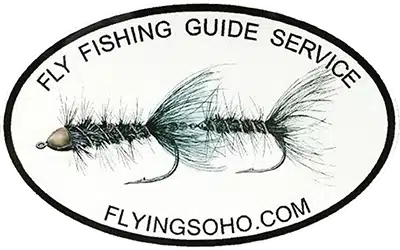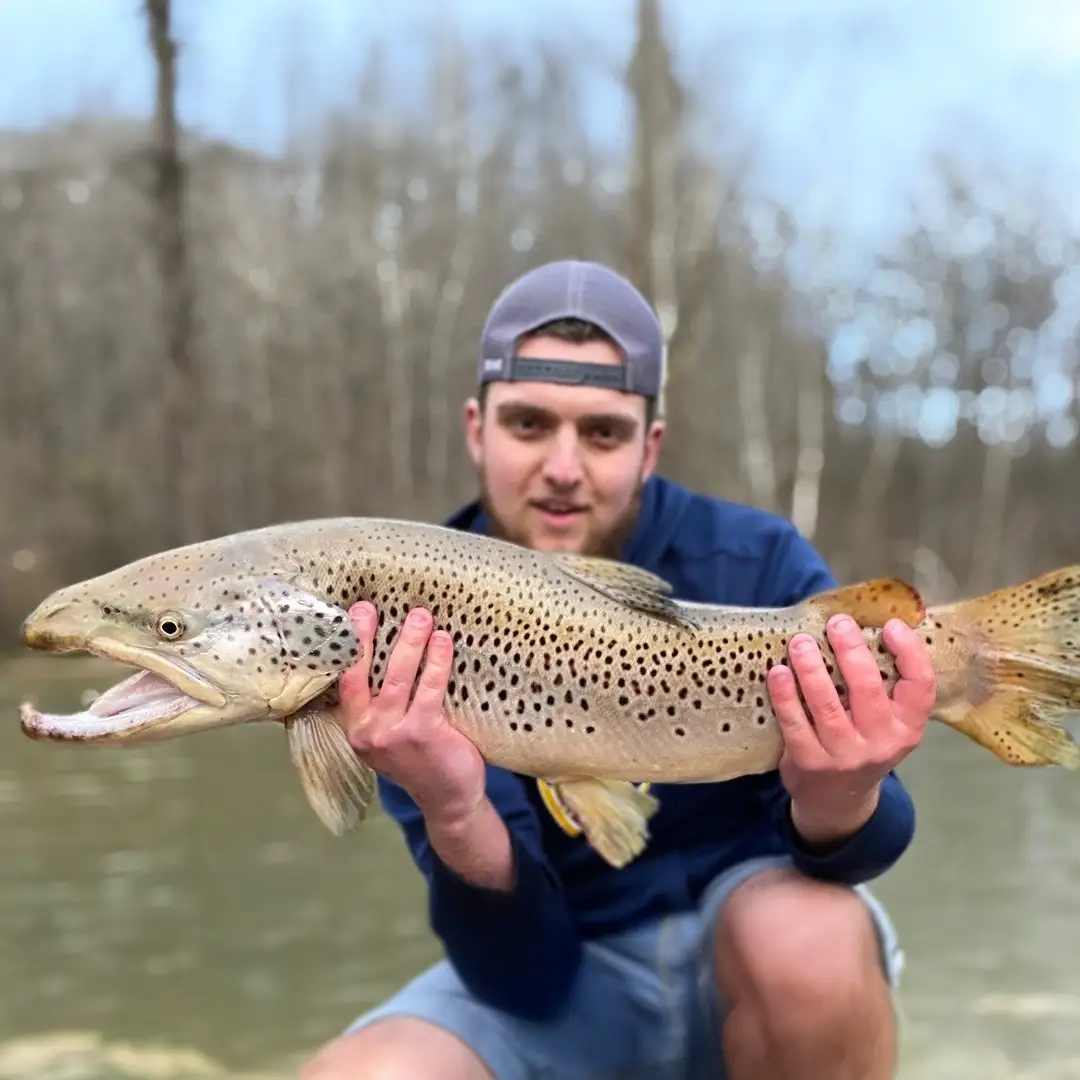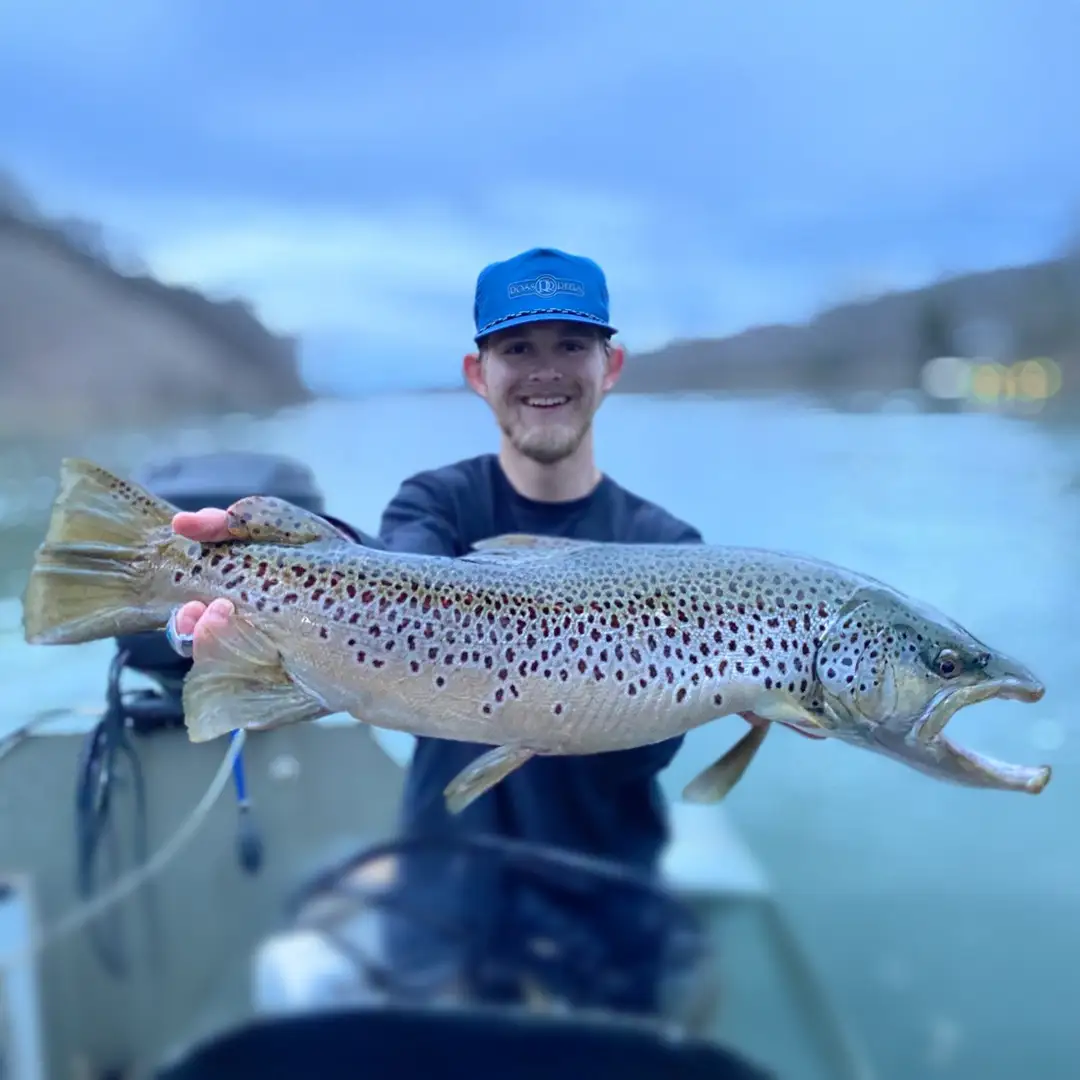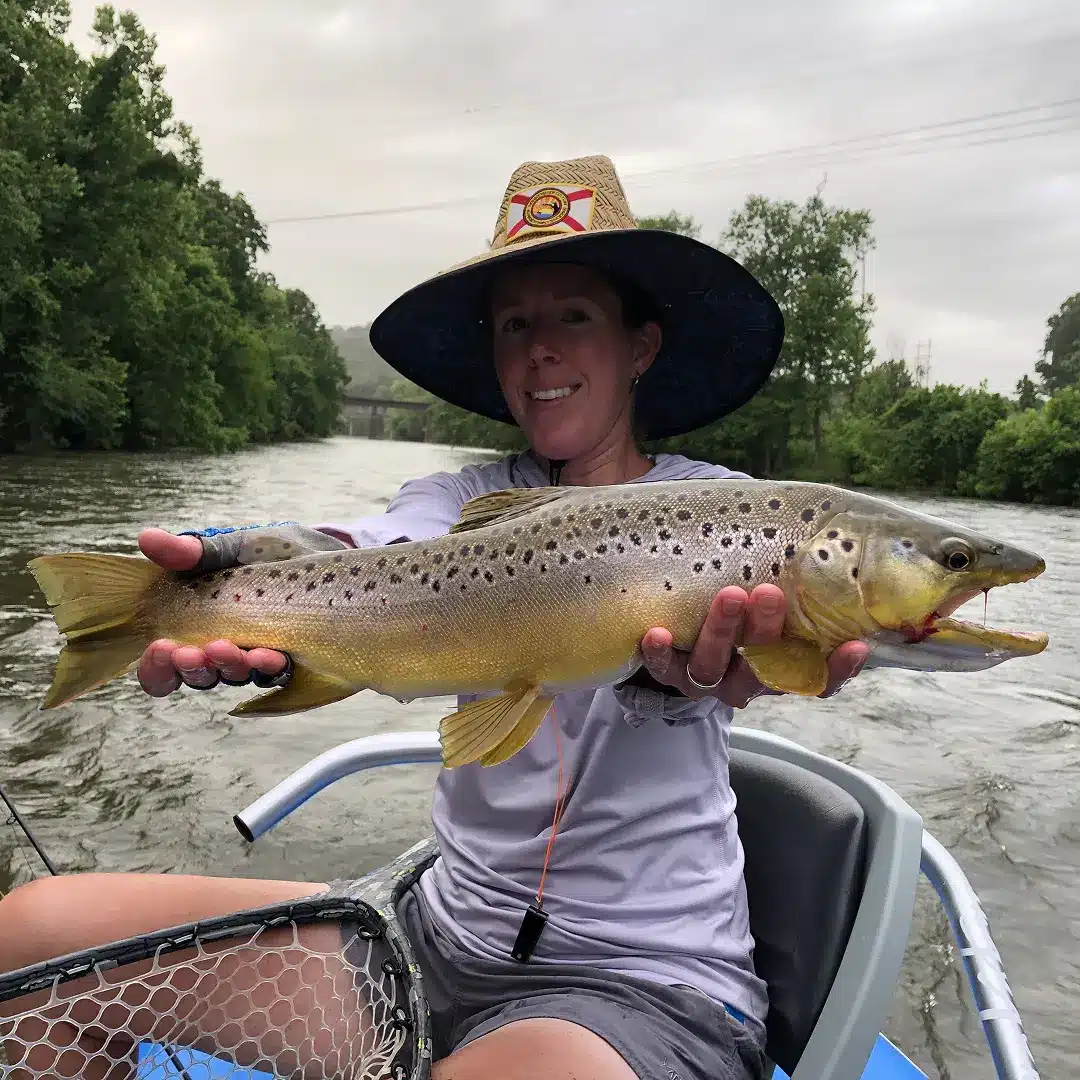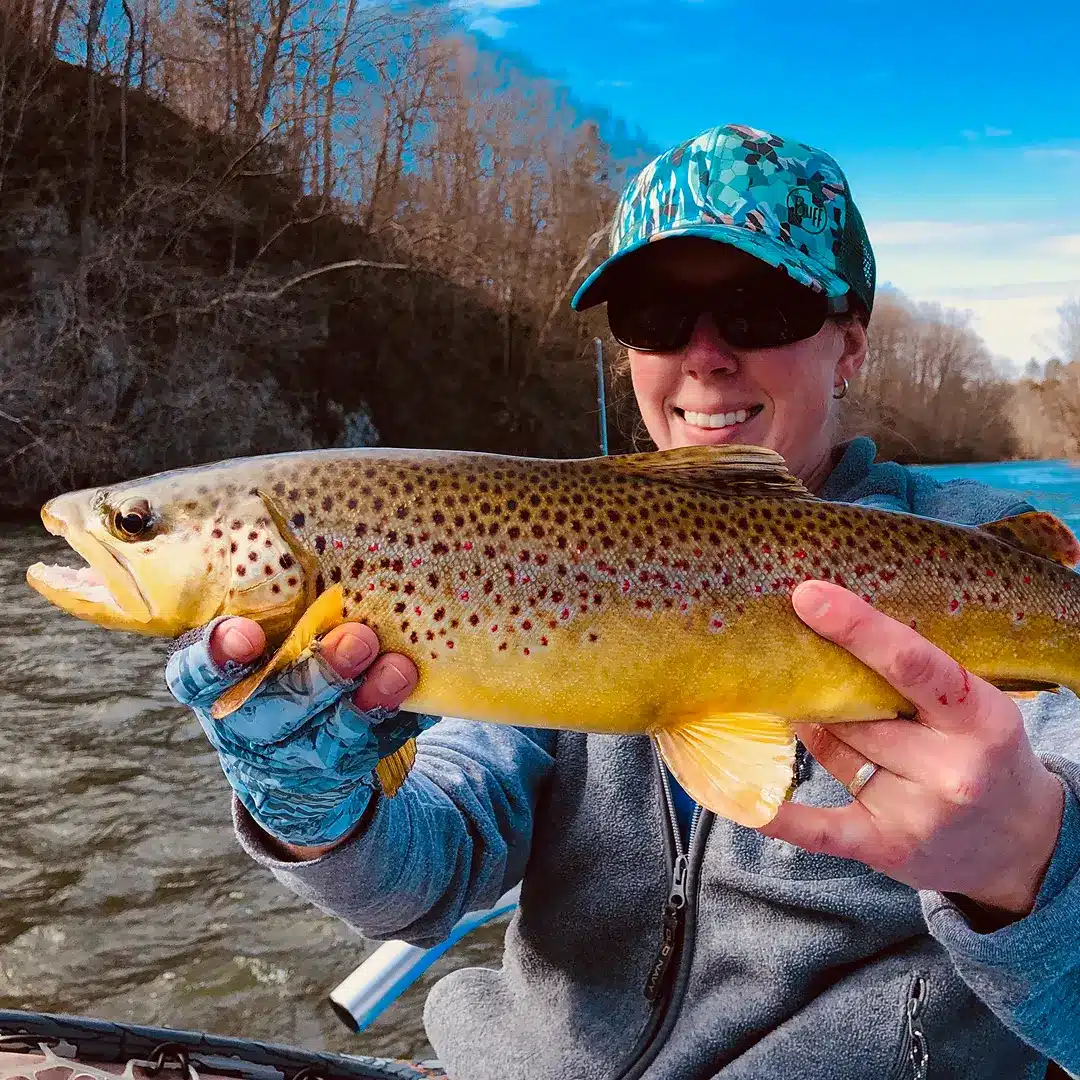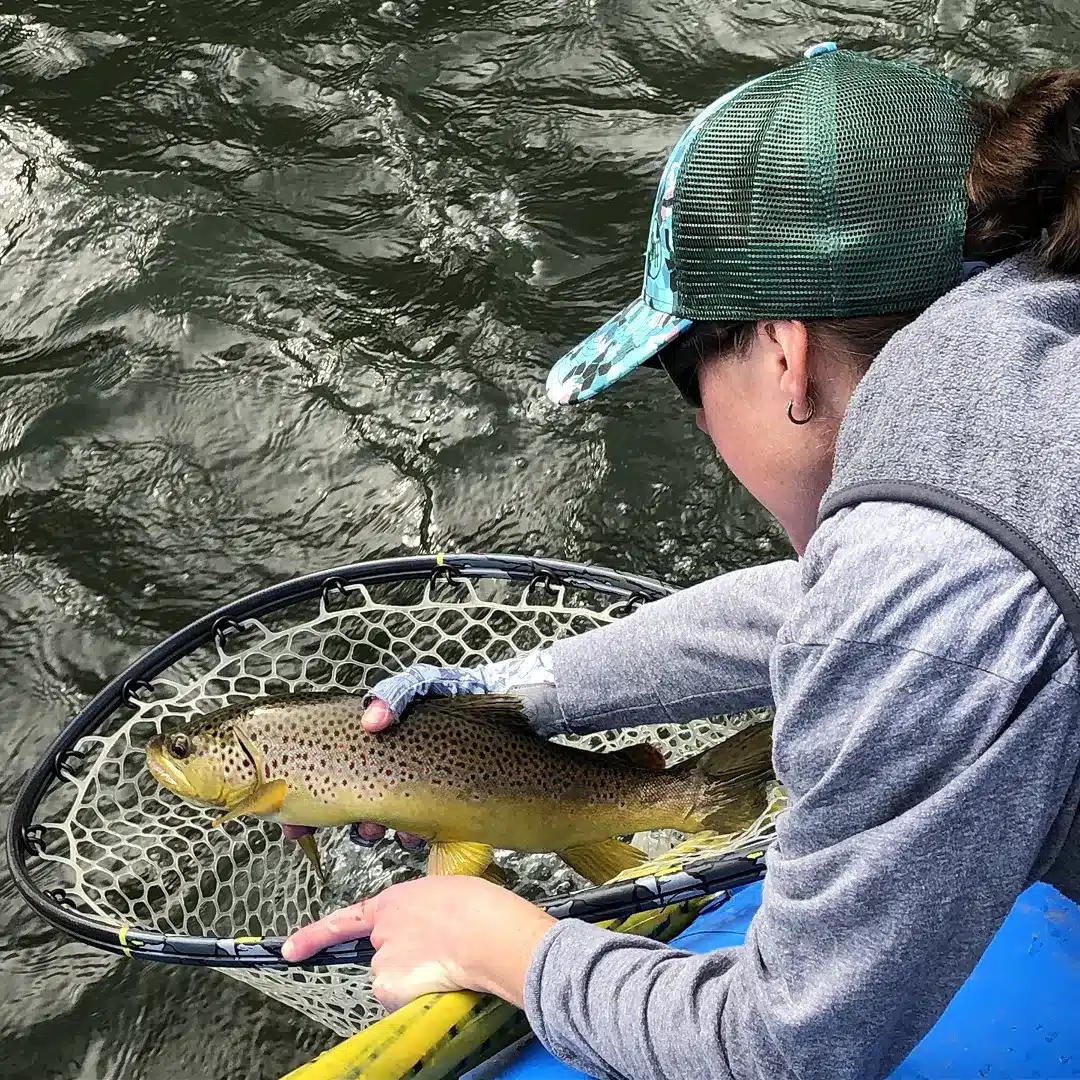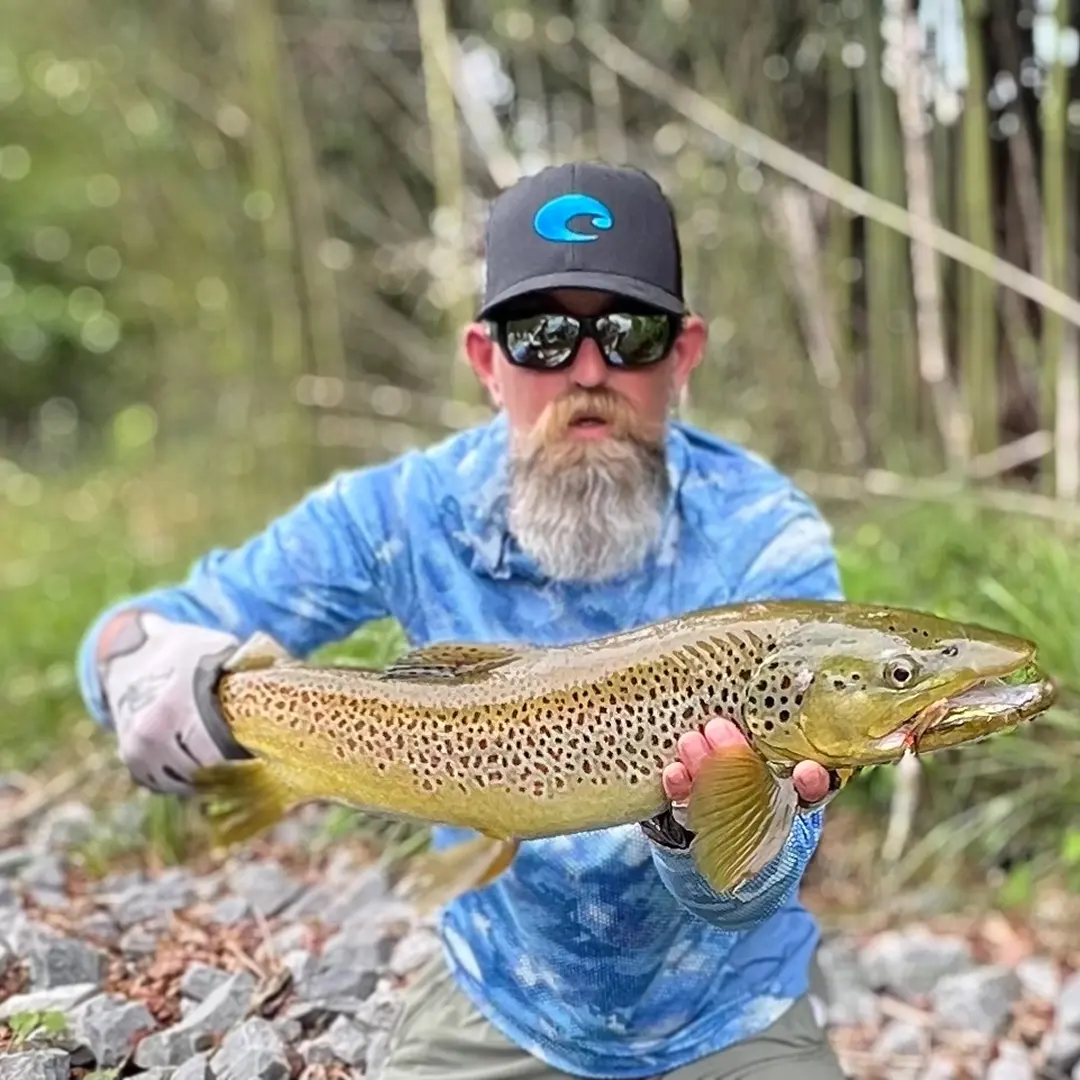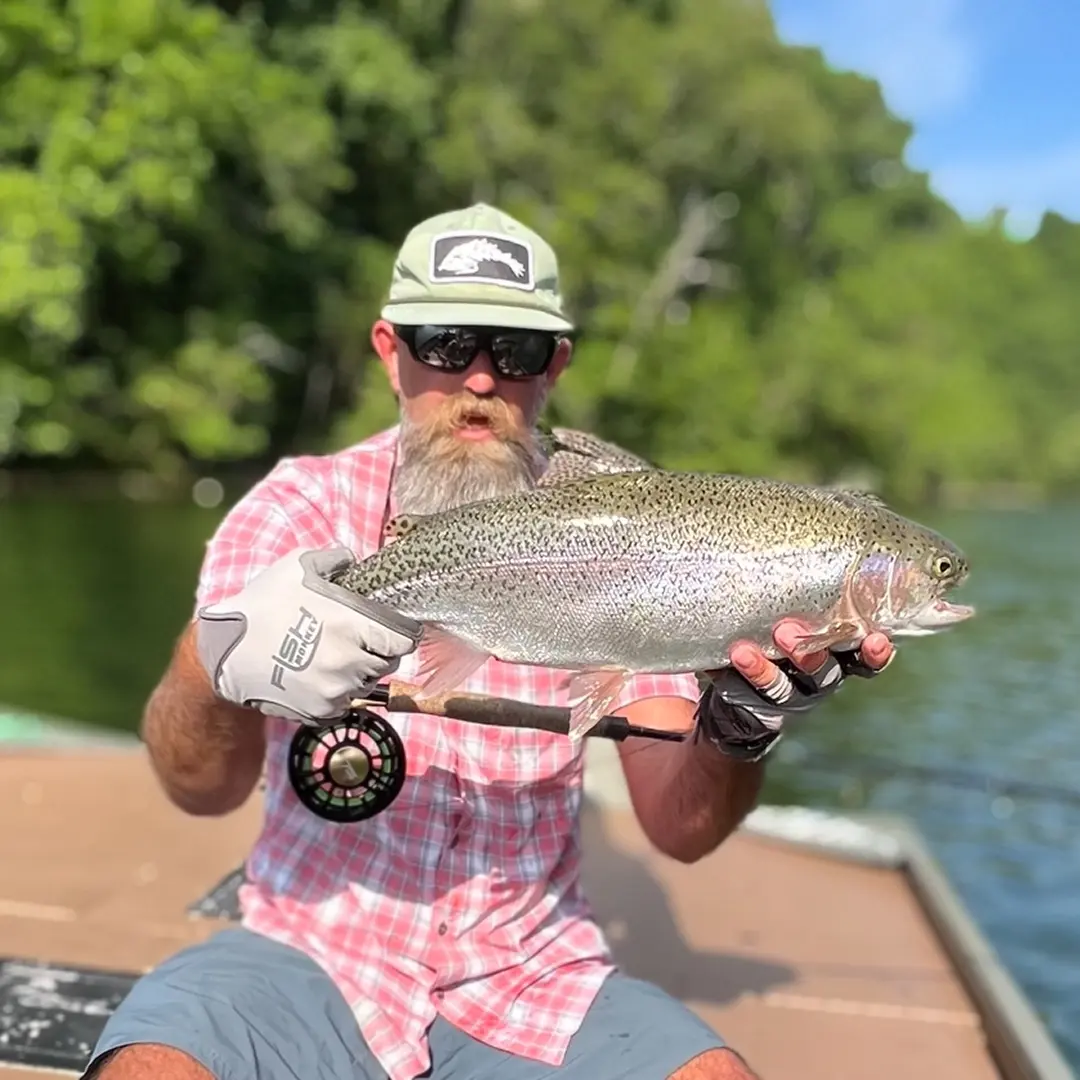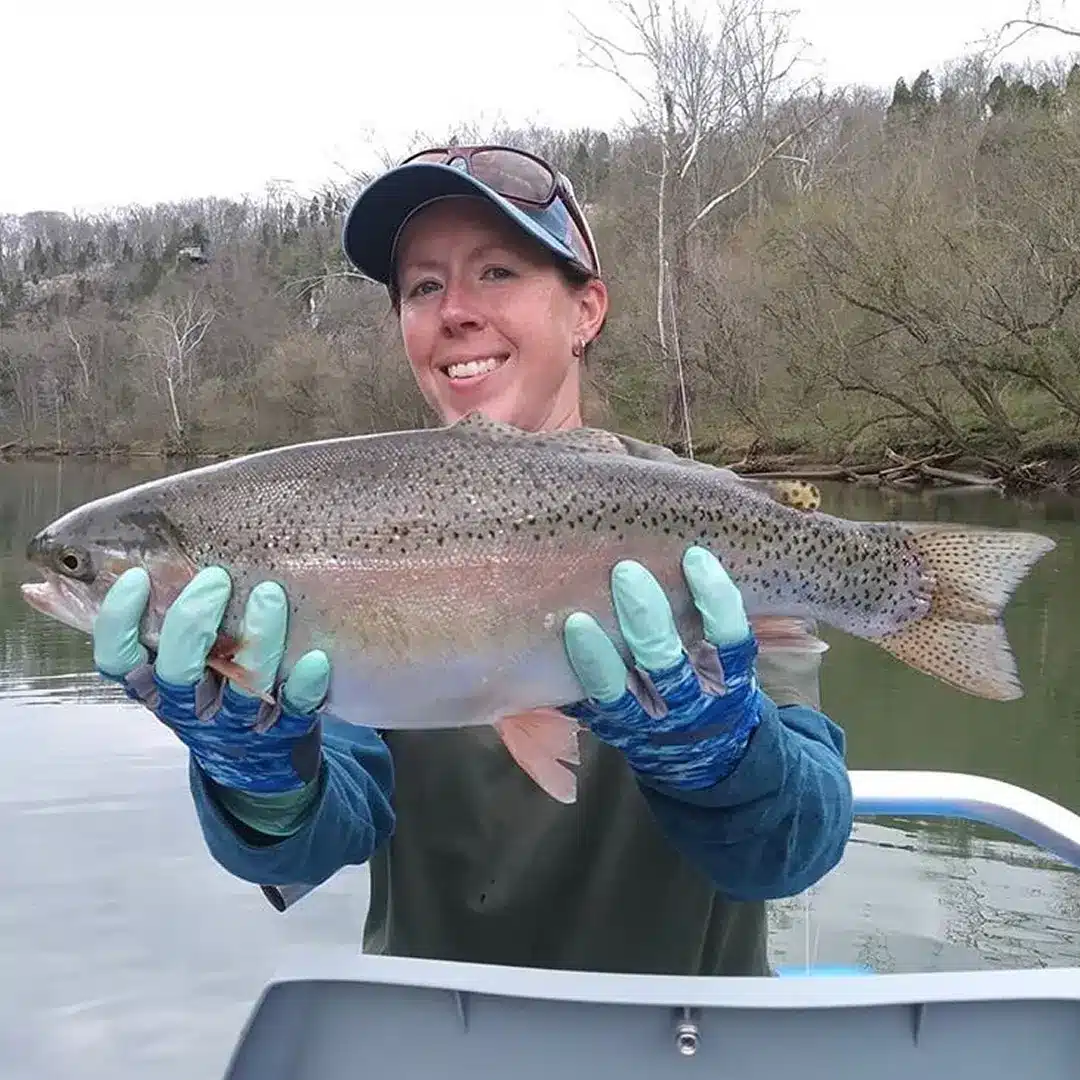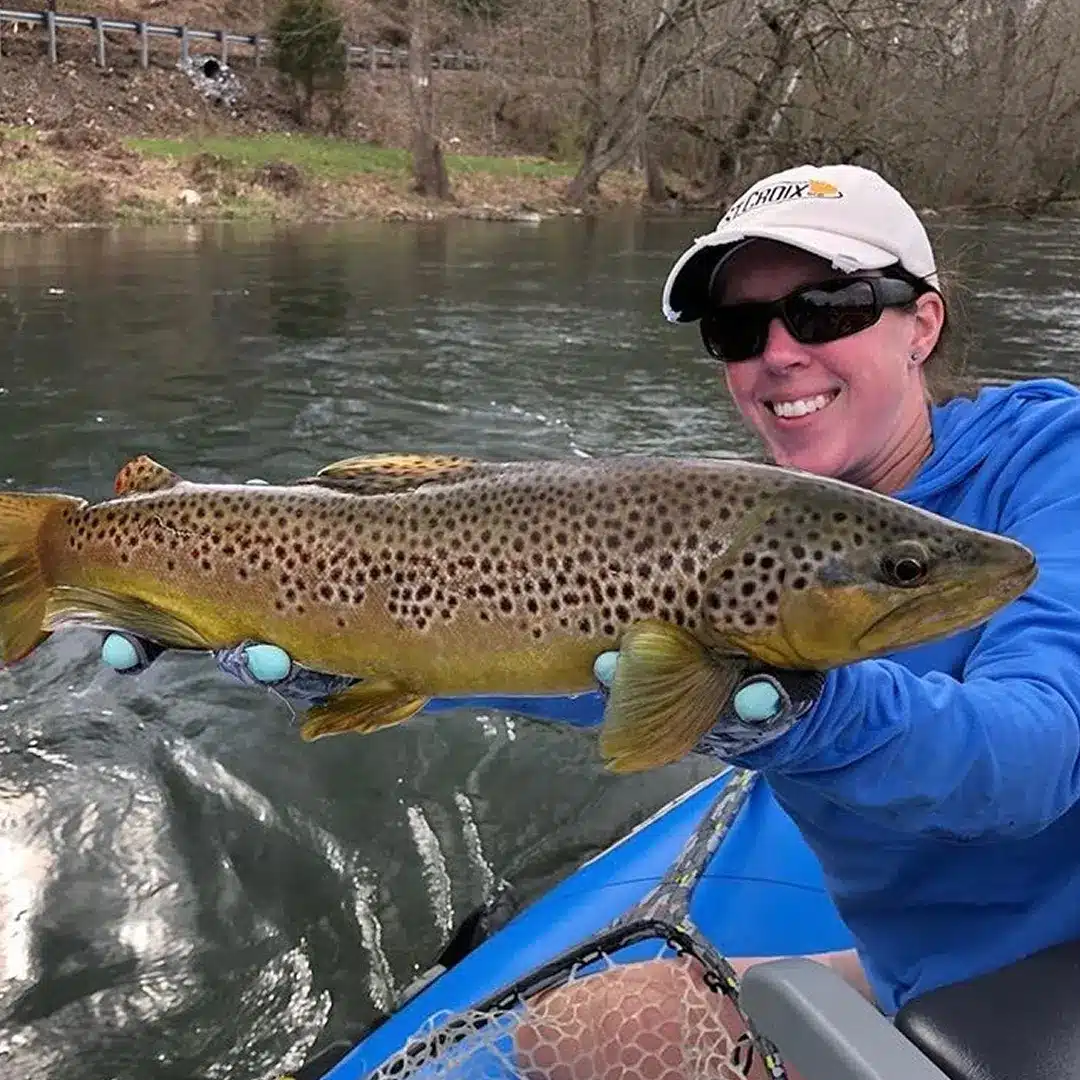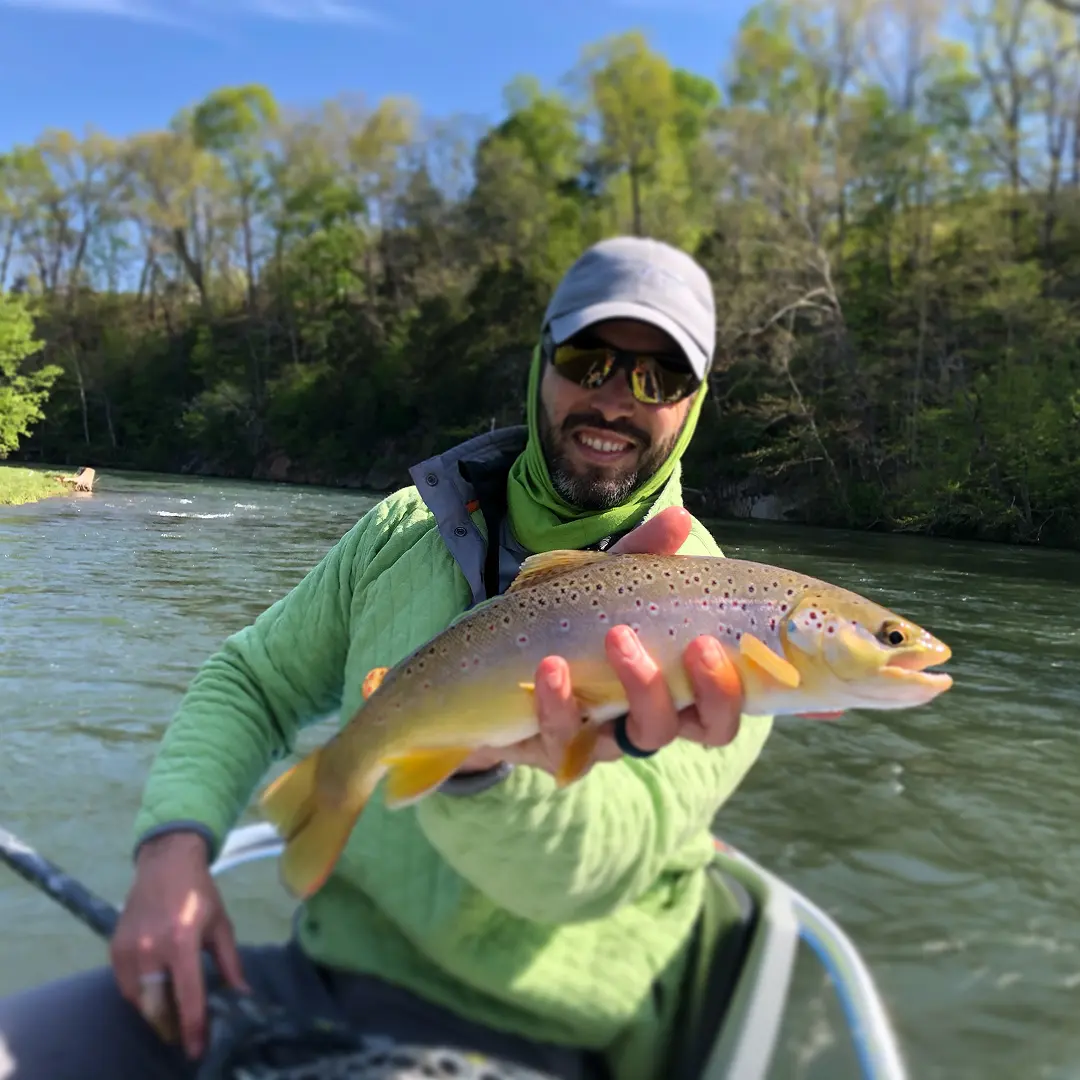Streamer Trophy Trout Fly Fishing
A guided streamer Trout fly fishing on the rivers of East Tennessee isn’t your typical day on the water—this is a focused hunt for giants.. Armed with 8-weight rods and 4–6” articulated streamers, we’ll spend the day targeting the apex predators of the river: trophy brown and rainbow trout. These fish aren’t sipping dries in the shallows—they’re ambushing baitfish from under heavy structure, and it takes a committed cast, a relentless retrieve, and a bit of grit to find them. It’s a high-reward style of fishing that demands patience, persistence, and a willingness to grind.
We fish the South Holston and Watauga Rivers, exploring remote stretches that rarely see pressure thanks to our jet boat access. These are wild, technical waters that hold some of the biggest trout in the Southeast. From pre-dawn launches to chasing shadows under overcast skies, the goal is always the same: put you in front of the fish of a lifetime. Every cast could be the one that changes everything. When that eat happens—violent, sudden, unforgettable—you’ll understand why we throw streamers. This isn’t just fishing. It’s trophy hunting with a fly rod.
Target Species
Day or night, all year round we are fishing the same exact way – technical casts with big 4-6” articulated streamers covering as much water as possible.
There is immense trophy potential in these waters, Brown Trout up to 27” are fairly common, we have captured them as large as 34”. Rainbows hold the same potential – 27” are fairly common and we have caught them up to 33”.
Here is how the seasons break down:
Winter (December–February)
Winter can be prime time for chasing true giants. Cold water slows down the metabolism of smaller fish, but big predatory browns still need to eat—and they’re looking for high-protein meals. This is when large streamers really shine. Fish are often more concentrated and aggressive, and with less angling pressure and lower water clarity, the odds of a big bite go up. We do not do any fishing targeting spawning trout, we will stay far away from the redds.
Spring (March–May)
As temperatures rise, baitfish and aquatic life become more active, and trout follow suit. Spring brings increased flows from snowmelt and rain, which opens up new water and gives fish more places to ambush prey. This is a dynamic time for streamer fishing—you might be stripping through flooded banks one day and targeting mid-river structures the next. The fish are aggressive post-spawn, feeding up and moving often, which keeps things exciting.
Summer (June–August)
Streamer fishing gets technical in the summer, but this is our favorite time to go. Water levels drop, clarity increases, and fish become more cautious. This is when our smaller jet boat shines, getting us into skinny, remote water that most anglers can’t access. Early mornings, cloud cover, and night fishing become key windows for success. Trout are still willing to eat big streamers—but presentation, stealth, and timing are everything. It’s a more surgical approach, but the rewards are still there for those willing to put in the work.
Fall (September–November)
This is arguably the best time of year to throw big streamers. As the water cools and brown trout prepare for the spawn, aggression ramps up. You’ll see more territorial behavior, violent eats, and fish moving long distances to chase down flies. This is peak “trophy season” in many ways, and the action can be explosive. With the rivers at perfect levels and trout at their most fired up, fall streamer fishing is a full-throttle experience.
Where We Fish
Most of our trips take place on the South Holston and Watauga Rivers, both of which offer year-round cold water due to tailwater releases from TVA dams. These rivers are packed with structure and offer wildly different characters depending on the stretch and the season.
- On the South Holston, we’ll fish the deeper tailouts, mid-river ledges, and high banks where big browns post up. The SoHo is known for technical fishing, but it’s also home to absolute giants.
- The Watauga offers a mix of pocket water, deep channels, and banks loaded with debris—perfect for hunting with streamers. It’s often a bit more forgiving in terms of flow and clarity, which helps when adapting to changing weather or pressure.
We use jet boats to access under-fished, hard-to-reach stretches of both rivers—places most anglers don’t see. These waters are less pressured and often hold the kind of fish that make your season. We pick where we go based on flows, clarity, season, and where the bait and big fish are holding. Some days we’ll cover 8+ miles of the river and some days we’ll thoroughly work a .25 mile section. It all depends on the baitfish movements. The types of structure we target often include:
1. Cut Banks & Undercuts
These are prime spots for big browns. Undercut banks provide shade, depth, and cover—everything a trophy fish wants. Streamers stripped tight to the edge often get violent eats as fish dart out to crush the fly.
2. Logjams, Fallen Trees & Brush Piles
Wood in the water creates complex structure. Big trout love it because it offers protection and ambush lanes for baitfish. We often position the boat to swing or strip streamers past these zones, sometimes requiring surgical casts to avoid snagging, but it’s high-reward water.
3. Boulder Fields & Deep Drop-Offs
Big rocks and ledges break current and provide hiding spots. These areas often hold fish that are waiting to shoot out into fast water to feed, especially during higher flows. Streamers bounced off these edges or drifted into the zone can produce heart-stopping strikes.
4. Seams & Eddies
Where fast and slow water meet, or where current breaks create swirling back-eddies, baitfish often get trapped—and big fish are waiting. These areas require precise control of your fly’s depth and speed, but they often hold hungry trout looking for an easy meal.
5. Slow Inside Bends
These bends tend to collect structure, depth, and softer current. Larger trout will often sit in these zones, especially during warmer months or lower flows when conserving energy becomes more important.
What's Included
Trophy fishing can be hard work! We include everything you need to ensure the day is as enjoyable as possible. Along with all the fishing equipment, each full-day trip includes a delicious lunch, soft drinks, bottled water, and snacks. For half-day trips, snacks, soft drinks, and bottled water are also provided.
Trips include:
- Rods
- Reels
- Flies
- Leaders
- Tippet
- Drinks
- Snacks
- Full-day trips include lunch
What To Bring
Please remember to bring a valid TN fishing license, as well as clothing and gear suited to the day’s weather. Polarized sunglasses, a brimmed hat, and sun gear like a buff are highly recommended—especially during the summer months between 11 AM and 3 PM. Pack sunscreen, a lightweight long-sleeve shirt, quick-dry pants, and footwear with a heel strap (such as sandals or water shoes). If rain is in the forecast, be sure to bring a quality rain jacket, rain pants, and waterproof boots to stay comfortable on the water.
- TN fishing license
- Hat
- Polarized sunglasses
- Sunscreen
- Sun gear
- Rain gear (if necessary)
- We’re pretty flexible with what you bring, but we do request you do not bring spinning gear. We are exclusively fly fishing.
Streamer Trophy Trout Fly Fishing FAQs
Have a question? We've got answers. If you do not see your question answered below, please do not hesitate to contact us.
